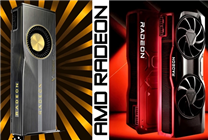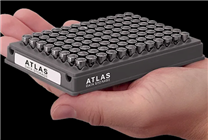AMD’s Commitment to RDNA1 and RDNA2 Graphics Cards: A Positive Outlook for Gamers
Summary:
- AMD has confirmed ongoing support for RDNA1 RX 5000 and RDNA2 RX 6000 graphics cards amid initial concerns over driver optimization.
- The company will provide game support and enhancements for all RDNA series simultaneously, including upcoming titles.
- Historical context shows that AMD’s decision aligns with industry standards, demonstrating a commitment to longevity for its hardware.
On November 4th, AMD sparked considerable discussion among the gaming community by suggesting it might discontinue driver optimizations for its RDNA1 RX 5000 series and RDNA2 RX 6000 series graphics cards. Given that these graphics cards are relatively young—having been released in 2019 and 2021 respectively—the idea of phasing them out was met with frustration from users.
Fortunately, AMD swiftly clarified its position, announcing that both generations of graphics cards will continue to receive driver updates and optimizations. This response underscores the company’s dedication to its existing customers.
In a statement to the media, an AMD official emphasized, “Game support and optimization for all RDNA 1-4 series architecture products will be provided in the driver at the same time, including but not limited to popular titles such as ‘Call of Duty,’ ‘Resident Evil,’ and ‘Red Desert.’” This assurance is particularly timely, as several highly anticipated games are on the horizon. Upcoming releases include "Call of Duty: Black Ops 7," set to launch this month, "Resident Evil 9: Requiem" in February of next year, and "Red Desert" in March 2024.
The RX 5000 series launched just over six years ago, while the RX 6000 series is only two years old, raising questions about the rationale behind potentially discontinuing support. In comparison, competitor NVIDIA has historically supported its Kepler GeForce 600 series for nine years, offering an additional three years of emergency security updates. Thus, AMD’s proactive stance on continuing support not only meets but exceeds user expectations, reaffirming its commitment to customer satisfaction and long-term product viability.
As the industry evolves with advanced graphics architectures like RDNA3 and RDNA4, AMD’s strategy to simultaneously optimize older graphics cards alongside newer models sets a precedent in maintaining user confidence. Gamers relying on RX 5000 and RX 6000 GPUs can breathe easier knowing they will not be left behind as the gaming landscape continues to innovate.
The gaming community’s concerns about hardware longevity are legitimate and reflect a broader trend in consumer expectations. As games continue to demand more from graphics hardware, manufacturers are increasingly challenged to balance the introduction of cutting-edge technology with the support of existing products. AMD’s commitment to optimizing multiple generations of graphics cards demonstrates a forward-thinking approach that enhances gamer experience.
Conclusion
In summary, AMD’s promise to continue driver optimizations for its RDNA1 and RDNA2 graphics cards reflects a positive commitment to its user base. As new gaming titles prepare for release, AMD’s approach ensures that gamers can maximize their experience on both new and existing hardware. With this ongoing support, AMD illustrates its dedication to enhancing the gaming landscape while respecting the investments made by its customers. The decision serves as an important reminder that innovation and legacy support can coexist, creating an engaged and satisfied gaming community.







